“A song like Eruption is about the guitar itself, but Machine Gun is about the nation at a specific point in time. Jimi Hendrix plugged into that at an unprecedented level”: Vernon Reid names 10 guitarists who shaped his sound
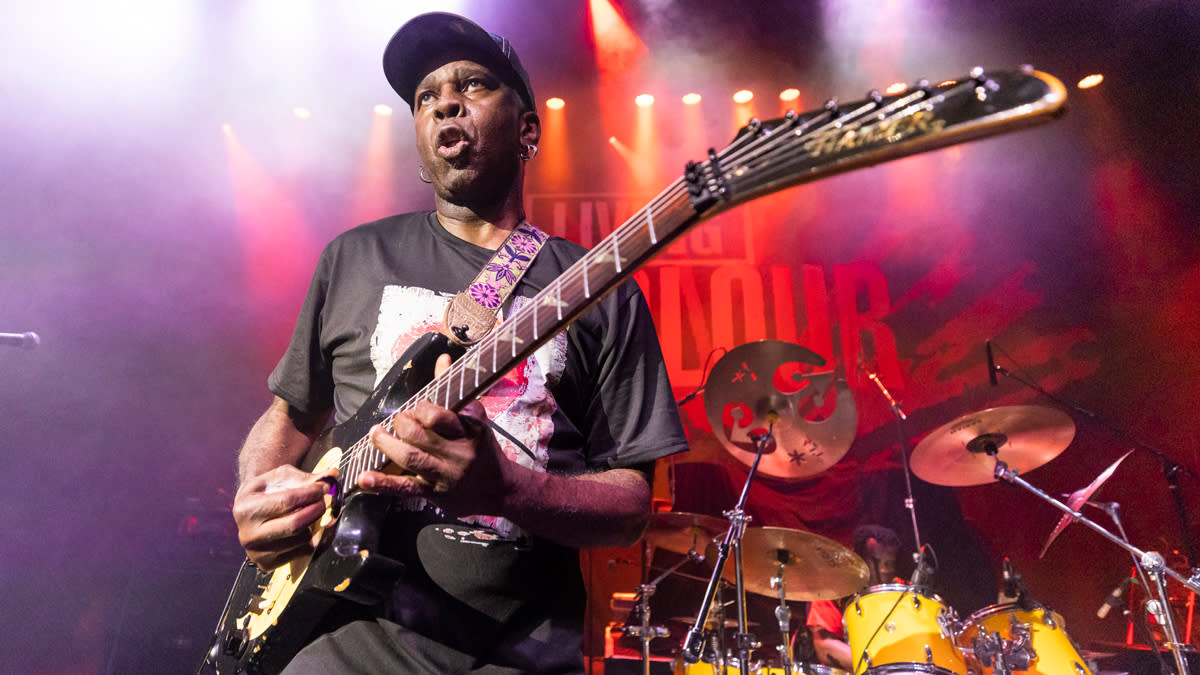
2023’s summer months found Living Colour and Extreme wowing audiences with Vernon Reid and Nuno Bettencourt's guitar grandeur. But Reid was also making headlines (in the guitar world at least) with a series of TSA-related pedalboard misadventures and his trigger warning-worthy Instagram posts that documented the aftermath.
"That was such a nightmare," Reid laughs. "I was coming from Memphis, TN, with my trusty pedalboard, and when I got home, I was like, 'It's time for me to tweak some things and see what's going on.' And when I opened it up, it was so shocking; I was stunned because everything was turned upside down."
"It was insane," he says. "So, I took a shot of it, put it up on the interwebs; people responded, and Guitar World even picked it up! But what's crazy is it happened again, and I shot it in real-time. I got outside the baggage claim, saw a latch was undone, and said, 'Oh… that's not a good sign,' and it was the same deal."
Reid was shocked by the incidents, especially since he'd been "traveling and flying with that same board for years," only to be bombarded with twisted cables and a caseload of top-drawer stompboxes haphazardly thrown around, even leaving one with "a broken knob that needs repair".
"I attribute it to a post-pandemic hiccup, even though we're not really 'post-pandemic’ yet," he says. "Flights are going back online, and people are traveling again, and there must be a breakdown in the number of trained personnel. So, I've been posting these videos, and knock on wood, it seems to have calmed down. But I feel like it could go sideways at any time."
"Once I got through the shock, horror, and outrage, it wasn't so bad; the pedals were all there, and the cables weren't cut. But I'll have to make a sign that says, 'X-ray to your heart's content, but please don't turn me upside down, or unplug [laughs].'"
Now that Reid and his traumatized pedalboard are off the road, he's turned his attention to other guitar causes – in particular, supporting "bona fide legends from being bypassed" through a series of grassroots X (formerly Twitter) campaigns to get unrecognized icons of the instrument to, at minimum, 10,000 followers. So far, Robin Trower, Mike Stern, Elliot Easton, Ernie Isley and Robert Cray have been beneficiaries of the campaign.
"The way it started was Robin was promoting his new tune," Reid says. "And I went to his [X] account, saw how many followers he had, and was like, 'This is crazy.' It was sick; his count was under 7,000, which blew my mind. I know time goes on, and people move forward, but that was just not right."
"That was the beginning of it. Then I looked at Robert Cray and Elliot Easton, guys in famous bands, and they were overlooked, too. We're talking about preeminent guitarists of the 20th century; it just made no sense to me."
When asked why he feels some players garner boatloads of attention while others remain in the shadows, Reid says, "The construct of social media is designed to addict and overwhelm us. Modern life is overwhelming, and everything is always coming at us, so that's part of it."
"But the way people listen to music now is different, too," he explains. “So, the ones you most often see are the top-tier, evergreen players. But it's still shocking when a player like Ernie Isley or Mike Stern has so few followers.”
“It's a matter of these players not having their Stranger Things, Kate Bush, Running Up That Hill moment,” he continues. “So, what I'm doing now is I'm calling it 're-amping' these players, and I'm sending the messages out in all caps, which makes me look insane [laughs]. But I got Robin Trower and Robert Cray to 10,000 followers, which energizes me."
As he prepares to run through the players who initially shaped his sound, Reid concludes: "It's important to never stop making connections between the players of today and yesterday. We can't – especially if they're still living – let them fade away. We can't be okay with that; let’s keep re-amping these guys and get them the recognition they deserve."
1. Carlos Santana
"I didn't realize when I first heard it, but Black Magic Woman/Gypsy Queen was a combination of two players: Peter Green and Gabor Szabo. Both players are extraordinarily influential, but Gabor Szabo, particularly, influenced Carlos Santana. So, Black Magic Woman/Gypsy Queen is a fusion of two different songs, but Carlos inhabited them in a totally unique way when I heard it.
"His guitar is very vocal, unlike other guitar sounds I heard then, and interestingly, his playing reminded me of Dionne Warwick's singing. I later found out that Carlos was influenced by Dionne but didn't know it then. So, I didn't know how all this affected me then, but looking back, the sounds Carlos was making were the first things that inspired me to pick up the instrument he was playing."
2. Jimi Hendrix
"I always come back to a few things with Jimi, one being Machine Gun, specifically the second version from the Band of Gypsys set, recorded on January 1, 1970, at the Fillmore East. It’s the one electric guitar performance that stands out as being about more than just the notes he's playing.
"Jimi was playing the zeitgeist there and spoke to what the nation was going through. He was a witness to what the nation was going through and was communicating with people who were walking in rice paddies in Vietnam thousands of miles away. He was in solidarity with the Vietcong and the American G.I.’s with Machine Gun.
"The next time you check that song out, go to Black Sabbath's War Pigs, and you'll find a continuum of commentary about warfare and its machinations. Jimi plugged into something cinematic, like a movie coming from his guitar. If you look at a song like Eruption, while extraordinary, it's about the guitar itself, but Machine Gun is about the nation at a specific point in time. Jimi plugged into that at an unprecedented level."
3. Jimmy Page
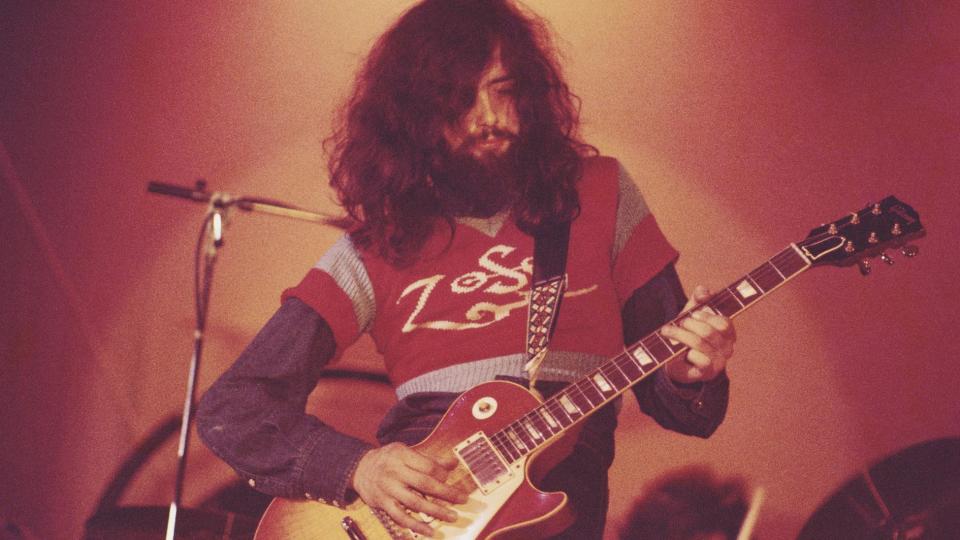
"I remember the first time I heard Jimmy, which was when I heard Whole Lotta Love. There was something propulsive about that song, and Black Dog.
"I remember hearing the AM radio version of Black Dog, which was edited and had parts cut out. And then FM radio version came, the first time I'd heard the uncut song, and I was like, 'Wow, this is weird. But this is cool; what is this?' I was used to the edited single, so hearing the FM version, which panned back and forth in stereo, was unique. It was super-clean and almost hi-fi sounding, which was wild.
"And with Jimmy, this weird, mysterious, dark thing was happening, which was also very interesting."
4. George Harrison
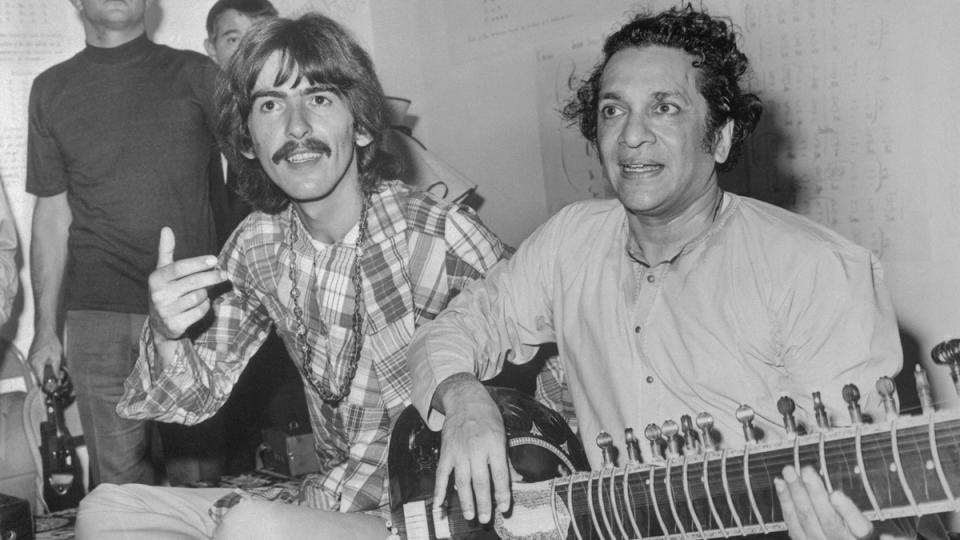
"I have to backtrack to the Beatles because they were such a huge thing. The evolution of the Beatles was mind-blowing, you know? No band had that kind of evolution. To go from I Want to Hold Your Hand to something like Revolution 9; that's insane. That's literally insane. It was so strange to me, but it was deeply intriguing. And in a way, George Harrison took the notion of 'world music' and helped bring that to the forefront.
"Coming back from India, George took the things that a guy like Ravi Shankar was doing and made them popular in Western music. Ravi was a maestro in India but was only known in certain esoteric Western circles. So, after taking lessons from Ravi, George Harrison took the sitar and drone stuff and added that into the Beatles' music through this pretty psychedelic sphere."
5. Tommy Bolin
"Along with the psychedelic stuff, there were post-modern things happening in jazz, too. One of my favorites from that scene is Bill Cobham's Spectrum, on which Tommy Bolin played. You had this insane duet between Jan Hammer and Billy Cobham on Quadrant 4, and then in comes Tommy Bolan playing some crazy space blues. It combined my interest in science fiction with the blues, colliding in one space.
"And with Tommy, I heard the James Gang stuff, which I liked, but my introduction was Spectrum. I remember a conversation I once had with Lee Sklar, who played bass on Spectrum, and he said one of the great professional disappointments in his life was that the Spectrum band never toured. Tommy was under contract with the James Gang and wasn't allowed to. It was an oppressive time, and I'm glad that stuff was over when Living Colour came about."
6. Eric Clapton
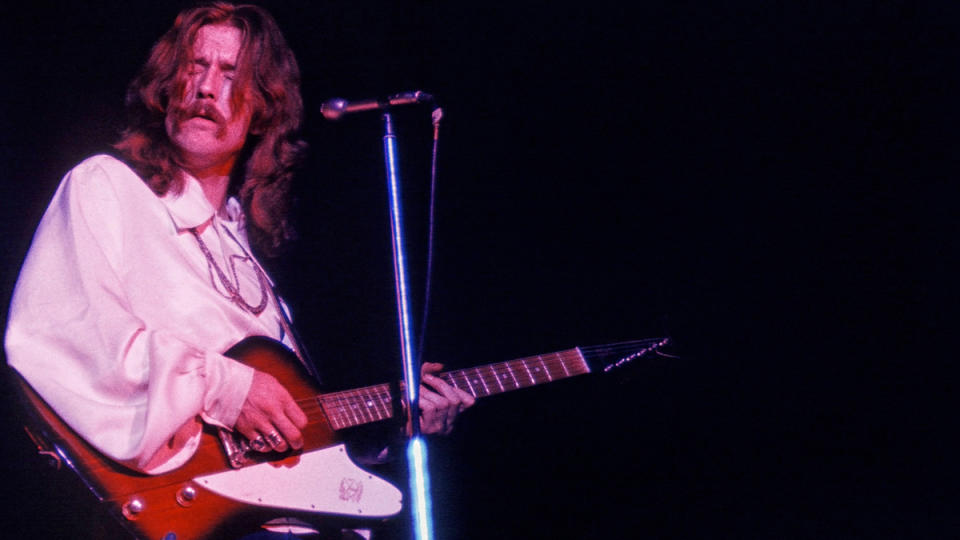
"Eric is problematic because, in the '70s, he went off into this kind of crazy racist jag when he supported… maybe I won't get into the politics of it. I will say that, aside from my powerful feelings of disappointment in him, I thought the Cream situation was incredible.
"With Cream, two things stuck out to me: the singer's voice, which turned out to be Jack Bruce, who I was blessed to meet and work with, and Eric's guitar. The way Eric played the wah-wah pedal in White Room and Sunshine of Your Love was very lyrical."
7. Jan Akkerman
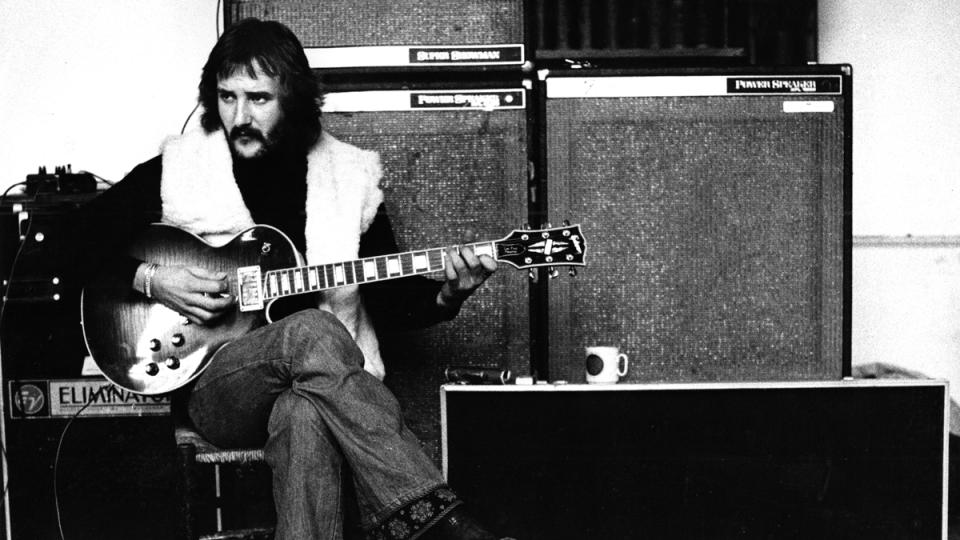
"Jan Akkerman from Focus is such an exciting player, and that band was totally weird, but in a good way. But Jan was unique in that he was the first player who was classical, but honestly, mostly a jazz guy.
"Jan was very improvisational in how he played, and when Focus came out, rock was splitting in two where players were either playing the same solo, or playing whatever came to mind. I’m firmly interested in the 'whatever comes to mind' school, even though I respect the other school, too.
"I've always gravitated toward improvisational guitar, probably because of my exposure to jazz guys like [John] Coltrane, Ornette Coleman, et cetera."
8. John McLaughlin
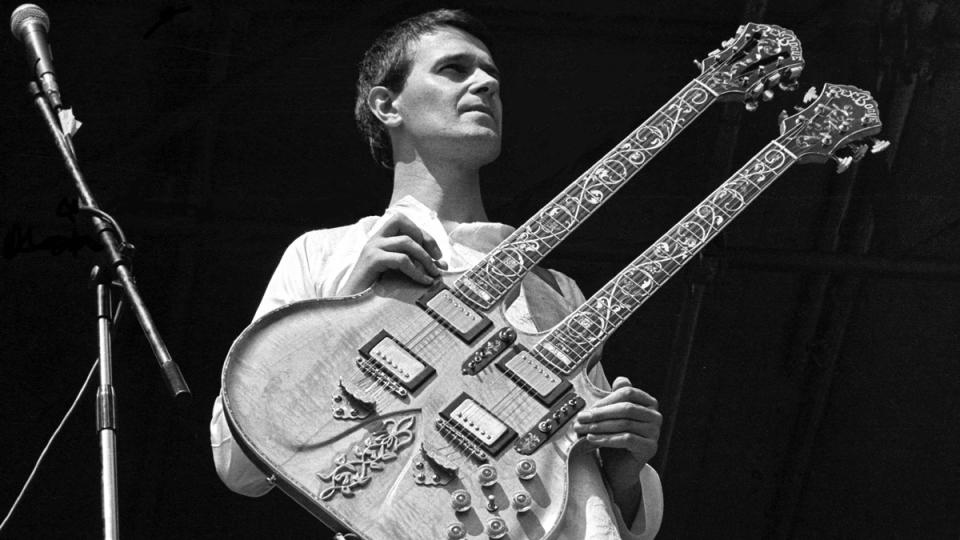
"I'd be remiss if I didn't mention John McLaughlin, whose playing with groups like Mahavishnu Orchestra showed such melody and discipline, but also, a lot of improvisation. If you look at a song like [Living Colour classic] Cult of Personality, there's a bit, though not a direct line, that's influenced by hearing John McLaughlin with Mahavishnu.
"But that's just a component; there's also a vibe and other things about that music that directly influence me, like the approach, and not just having a riff with no detail behind it. That aspect of my playing can be traced back to that."
9. Arthur Rhames
"There were also people from my neighborhood in New York City who influenced me, like guitarist and multi-instrumentalist Arthur Rhames. He played guitar at a McLaughlin level and did things that were mind-crushing. Seeing Arthur, a person I personally knew, play like that, and go into a Hare Krishna level of consciousness was truly mind-bending.
"He would wear these Hari Krishna robes and play this Hagstrom guitar in odd time signatures, and it was jaw-dropping. He had a song called 1975 Blues, that was ridiculous and had a vibe you wouldn't believe. I never saw the original Mahavishnu Orchestra, but in Arthur’s band, I saw something in my neighborhood that evoked the same feelings."
10. Eddie Hazel
"I first heard Eddie Hazel when I bought Parliament Funkadelic's Cosmic Slop, the first record I bought with my own money. And my first concert was Parliament-Funkadelic at the Garden when they played with War and Rare Earth. They played Maggot Brain, and Eddie, who had left the band but would come and play during big shows, came up and played it with them.
"Eddie was part of a movement of guitarists who cleaved away from what Hendrix was doing and started to cook up some tremendous things by taking serious progressive blues and R&B guitar to new levels.
"I've talked to George [Clinton] about this, and George was profoundly affected by the Summer of Love. Seeing Pink Floyd profoundly affected him, so he wanted to make Parliament-Funkadelic a band like Pink Floyd but entirely steeped in Black culture, which he did with albums like Cosmic Slop, America Eats Its Young, and Maggot Brain. Those are phenomenal, and the stuff Eddie did should absolutely be included within the pantheon of rock music and guitar."
Living Colour and Extreme tour the UK and Europe in November and December 2023. See LivingColour.com for full dates.
